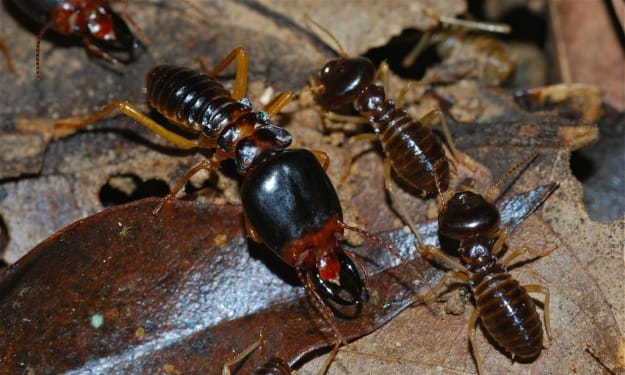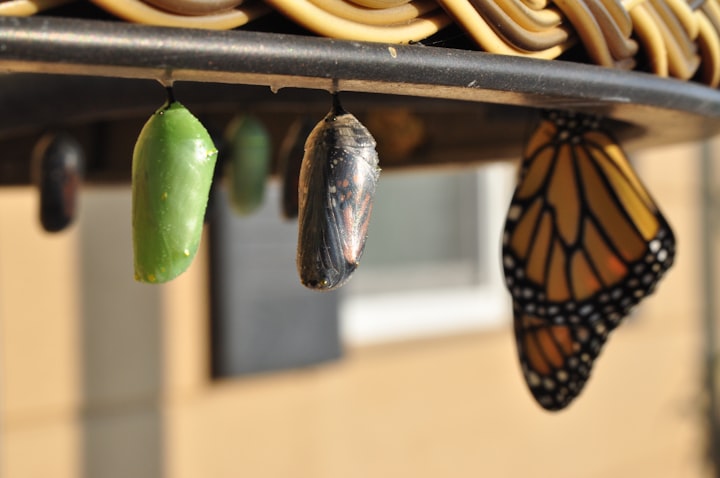Ball Python Care
How to Care for Your Pet Ball Python

Ball pythons (Python regius) are native to the continent of Africa. These docile serpents have been found in several countries to the west of the continent, such as Ghana, Nigeria, and the Central African Republic. These animals spend much of their time hiding in burrows, as they enjoy keeping to themselves.
What to Expect From Your Ball Python
Ball pythons are a rewarding snake to own. They're at the top of the list for best beginner snake. This is due to their tolerance of handling and docile nature. These snakes can be a bit shy, and often curl up in a ball, similar to an armadillo.
Ball pythons are a manageable, yet impressive snake to own. Males, on the shorter side of the scale, grow to reach three to three-and-a-half feet on average. However, due to sexual dimorphism, females grow to reach four to four-and-a-half feet long. Five feet long is viewed as large for a ball python, but it isn't rare for a female sub-Saharan ball python, or a Volta, to reach up to six feet in length. Even though these snakes have the ability to grow to large lengths in extreme cases, a human can easily overpower a ball python at its largest.
On average, a ball python can live 30 years or longer in captivity, if kept properly. Owning a pet is a large commitment, especially animals that can easily live over twenty to thirty years.
Enclosure
Pet stores will often instruct you to buy a glass tank to house your new ball python in. While glass tanks work as an enclosure, they aren't the best choice. Many experts state that glass tanks are meant for fish, and fish alone. Glass does not hold heat well, making glass tanks a poor candidate for housing your pet reptile.
An alternative to housing your ball python in a tank is a custom-built vivarium. Vivariums can be built out of wood or PVC board around the sides and back, with an acrylic viewing window in the front. Enclosures such as this can be bought custom built, or you can build your own.
As an unlikely alternative to the vivarium enclosure, plastic tubs can be used as well. Yes, the storage containers that you can purchase from Walmart can be used as a snake enclosure. Who knew? Ball pythons don't require massive enclosures. Large areas seem to stress these nervous snakes out. Keeping ball pythons in a smaller enclosure leaves the animal feeling less stressed and more secure in a smaller space. Plus, the plastic holds heat fabulously.
If you intend to keep large numbers of ball pythons, you can definitely invest in a rack system, or you can build one yourself. A rack system is essentially a shelf system that holds plastic tubs for your snakes. It's an efficient way of keeping snakes in a smaller area.
You may also want to decorate your snake's enclosure. You may add decorations such as fake plants and vines, cork rounds and flats, and more.
Enclosures can be extravagant or minimalistic. The main requirements that a ball python needs is the enclosure itself, bedding, a water bowl, a hideaway, and a heat source.
Hides are essential to a ball python's enclosure. It is recommended to have a hide box on either side of the enclosure. Hideaways decrease stress levels in your snake, making them feel secure in a small, dark space. A snake will retreat to the hideaway so that it may feel safe.
Temperature & Humidity
Since ball pythons are cold-blooded, meaning that they cannot create their own body heat, they require heating equipment. In order to keep your snake healthy, you should invest in an under-the-tank heating pad, heat tape, or ceramic heaters. Heat lamps aren't the best choice, as most snake species absorb belly-heat better than ambient heat. However, infrared heat lamps can still be used. UVB lamps are not required, as ball pythons are nocturnal animals and do not require sunlight.
Ball python enclosures should have a warm side and a cool side. This is so the snake can move about the enclosure to regulate its body temperature. This is where the hideaways on either side of the enclosure come in handy.
On the warm side, the temperature should be maintained at 88 to 96 degrees Fahrenheit. The ambient temperature should be maintained at 78 to 80 degrees Fahrenheit.
Since ball pythons are from a tropical climate, these snakes must be kept at specific humidity levels. Keeping these snakes at 55 to 60 percent humidity is important for healthy sheds. Investing in a thermometer and a hygrometer will prove useful when monitoring the temperature and humidity of your snake's enclosure.
Substrate
Several different substrates may be used for ball pythons. Aspen shavings or chips are great for ball pythons, and also offer an aesthetically pleasing look to the enclosure. Aspen works great for spot cleaning, as you may remove the soiled area of bedding and replace it quickly.
An alternate choice for aspen bedding is newspaper or paper towel. Unlike aspen bedding, you cannot spot clean paper towel or newspaper as easily. Whenever the snake soils an area of the enclosure, you must replace the newspaper or paper towel completely to ensure that the enclosure is clean.
You should never use any form of cedar bedding, as it is toxic to all reptiles.
Feeding
Ball pythons are among the easiest pets to maintain, as they only require one meal per week. These pythons are carnivores, and as such, must eat meat. You must feed your ball python mice, and eventually rats. There are three different ways of doing so. You may choose between feeding live prey, pre-killed prey, and frozen/thawed prey.
When choosing to feed live mice and rats, understand that a rat is capable of injuring or killing an adult ball python. Rats may bite and leave open sores on ball pythons who neglect to strike right away. If you do feed live prey, make sure that you watch your snake, and ensure that the rat does not harm your animal. Use feeding tongs to extract the rat from the enclosure if necessary.
Pre-killing prey is the practice of killing a live mouse or rat directly before feeding. This is achieved by breaking the neck of the rodent promptly before offering it to your snake. It is a bit morbid, but for those who can stomach it, it has less risk than feeding a snake live prey.
Feeding your snake frozen/thawed prey is one of the best ways to feed your snake. Frozen rodents must be thawed in warm water before feeding them to the snake. Do not attempt to hurry the process by putting the rodent in the microwave. It will explode. Once the rodent is thawed, dangle the rodent in front of the snake with feeding tongs. The snake should strike and coil around the prey. If the snake does not seem interested in the food, remove the rodent, and try again in a week.
F.A.Q.
Can I handle my ball python as soon as I bring it home? The answer is no. When you first bring a ball python home, it is best to leave it alone for at least four to five days. Let it acclimate to its new enclosure. Once it's settled in, try handling it for about ten minutes a day.
What happens if I handle my ball python after it eats? You should refrain from handling your ball python for at least 24 hours after he or she eats. Handling could cause the snake to regurgitate the rodent.
Do ball pythons bite? Anything with teeth can bite. In the event that your snake does bite you, try your best to stay calm. A snake bite is more shocking than painful. Think of it as a jump-scare that you weren't anticipating. However, a ball python would rather get away instead of confronting you head on.
What causes a ball python to bite? Ball pythons will bite for two main reasons. One, you're trying to take a female's clutch of eggs. Two, the snake has a high feeding response and has mistaken your hand for a rodent. When feeding, try your best to use feeding tongs. This puts some distance between you and the snake. Snakes may also bite if they feel stressed or threatened.
Are ball pythons a venomous species? No, ball pythons are not venomous.
Can a ball python kill me? No. A ball python understands that if it tries to go up against a creature significantly larger than them, such as a human, they will lose.
Can a ball python physically eat me? No, ball pythons are unable to eat anything larger than the thickest part of their body. The largest thing a ball python can physically eat is a large rat.
Do the color and pattern variations (morphs) require extra care? Morphs are simply color and pattern differences between the snakes. The care requirements for a normal, wild-type ball python will be the same for an albino, piebald, banana, mojave lesser champagne spider cinnamon, and so on.
Can I take my ball python outside? Depending on the weather, you should be able to take your ball python outside. If the weather is in the high 80s, low 90s (Fahrenheit) you should be good to go. Check with your local laws to see if there are any laws prohibiting snakes being brought out in public. If there are, you should be able to bring them out for some natural sunlight in your backyard. Never bring your snakes out during winter. The temperatures are far too low, and may cause your snake to get a respiratory infection.
What health issues do ball pythons face? Ball pythons have two major health issues. External mites is a large issue for snakes, especially if you have a large snake collection. It's always best to use products such as Provent-A-Mite to keep mite outbreaks away. When bringing a new snake into a collection, always use caution and quarantine that snake before bringing a possible outbreak into your collection. The second large health issue for snakes is a respiratory infection. Respiratory infections, commonly referred to as RI, are among one of the most common illnesses in snakes. Symptoms of RI include labored breathing and bubbling. Bubbling is when bubbles appear to be forming in the mouth.
Is it possible for a snake eating live prey to transition to eating frozen/thawed prey? The answer is yes. It is possible to transition a snake eating live to frozen. This is achieved by offering a frozen rodent to the snake. If the snake does not show any interest in eating frozen prey, refrain from feeding the snake. When the next feeding day comes around, offer a frozen prey item again. The snake should show interest and coil around the thawed rodent.
My ball python has gone off food completely. Should I be worried? Ball pythons typically will go off food, specifically males, from November to February. This is the ball python breeding season, and males are more focused on finding a female to mate with, rather than eating. Ball pythons are overall finicky eaters, and may go without food for extended periods of time. Don't worry, this is typical for this species. There have been cases where ball pythons have gone eight months without a meal, and when they were ready, they got back into a feeding routine without issue. However, I always offer a meal to my snakes, even if they have been uninterested in the past weeks, just to make sure that they have the option to eat if they desire to.
Can I refreeze a thawed mouse if my snake wasn't interested? No. Once thawed and offered, the rodent's insides may have started to spoil. It is much safer to dispose of the mouse, rather than to feed a rotten prey item to your snake in a week or so.
About the Creator
Briana Bayles
Just a reptile enthusiast with the goal to break the stereotype of the most misunderstood creatures in the world.






Comments
There are no comments for this story
Be the first to respond and start the conversation.